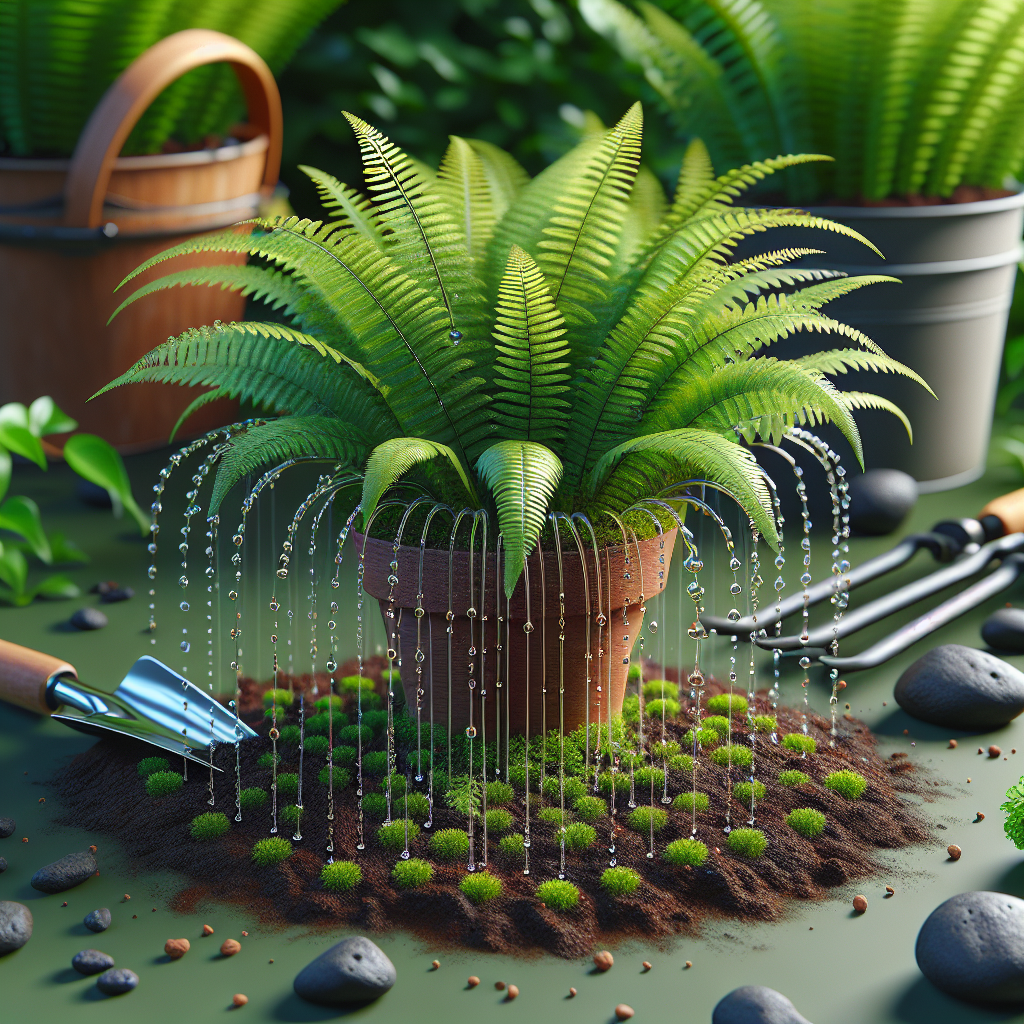Ferns are a beautiful and elegant addition to any garden or indoor space. Known for their lush green fronds and delicate foliage, ferns are a popular choice for plant lovers around the world. However, caring for ferns can be a bit tricky, as they require a specific amount of water and humidity to thrive.
One effective way to care for ferns is through slow drip irrigation techniques. This method involves providing a consistent supply of water to the plants slowly and evenly over time, mimicking the natural rainfall that ferns would receive in their native environment. In this article, we will explore the art of caring for ferns through slow drip irrigation techniques, including how to set up a system, when and how much to water, and the benefits of this method.
Setting Up a Slow Drip Irrigation System
Setting up a slow drip irrigation system for your ferns is relatively simple and requires only a few basic materials. You will need a watering hose or tubing with small holes or emitters spaced along its length, as well as a timer or valve to control the flow of water. You can also use drip irrigation kits that are specifically designed for use with houseplants.
To set up your system, first, place the hose or tubing around the base of your ferns, making sure that it is positioned close to the roots. You can secure it in place with stakes or clips if necessary. Next, connect the hose to a water source and adjust the flow rate using the timer or valve until you achieve a slow and steady drip.
When to Water
Knowing when to water your ferns is crucial to their health and success. While ferns do like moisture, it’s essential not to overwater them as this can lead to root rot and other problems. The best way to determine when your fern needs water is by checking the soil moisture level.
Before watering your ferns with a slow drip irrigation system, insert your finger into the soil about an inch deep near the base of the plant. If it feels dry to the touch, it’s time to water. If it feels moist or damp, hold off on watering until the soil dries out slightly.
How Much Water
When using a slow drip irrigation system for your ferns, it’s important not only to consider when but also how much water they need. Ferns prefer consistently moist soil but not overly saturated conditions. As a general rule of thumb, aim to provide enough water so that it reaches about 6-8 inches deep into the soil.
To determine if you are providing enough water for your ferns through slow drip irrigation, monitor how long it takes for water to seep into the soil around their roots. You may need to adjust the flow rate of your system accordingly until you find the right balance.
Benefits of Slow Drip Irrigation
There are several benefits to using slow drip irrigation techniques for caring for your ferns:
1. Consistent Moisture: Slow drip irrigation provides consistent moisture levels over time, ensuring that your ferns receive just the right amount of water they need without being overwatered.
2. Reduced Water Waste: Drip irrigation systems are more efficient than traditional methods such as overhead watering or hand watering with a hose because they deliver water directly where it is needed most – at the roots.
3. Less Risk of Disease: By keeping foliage dry and focusing on watering at soil level rather than from above, slow drip irrigation helps reduce humidity levels around plants which can lead to fungal diseases.
4. Time-Saving: Once set up properly, slow drip irrigation systems require minimal maintenance and can be automated using timers or valves so that you can set it and forget it.
In conclusion…
Caring for ferns through slow drip irrigation techniques is an effective way to ensure that these delicate plants receive just the right amount of moisture they need without being overwatered or underwatered. By setting up a system correctly based on when and how much water they require along with monitoring their soil moisture levels regularly can help keep your ferns healthy and thriving all year round. With proper care and attention through slow drip irrigation techniques, you can enjoy beautiful green fronds in your garden or indoor space for years to come!













